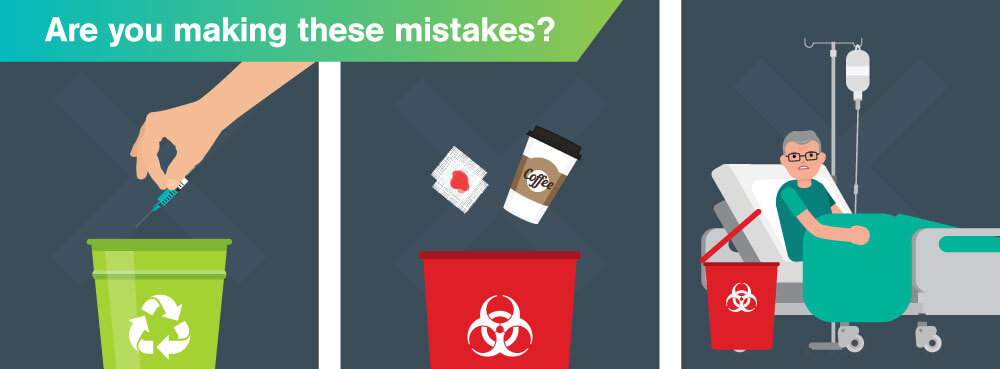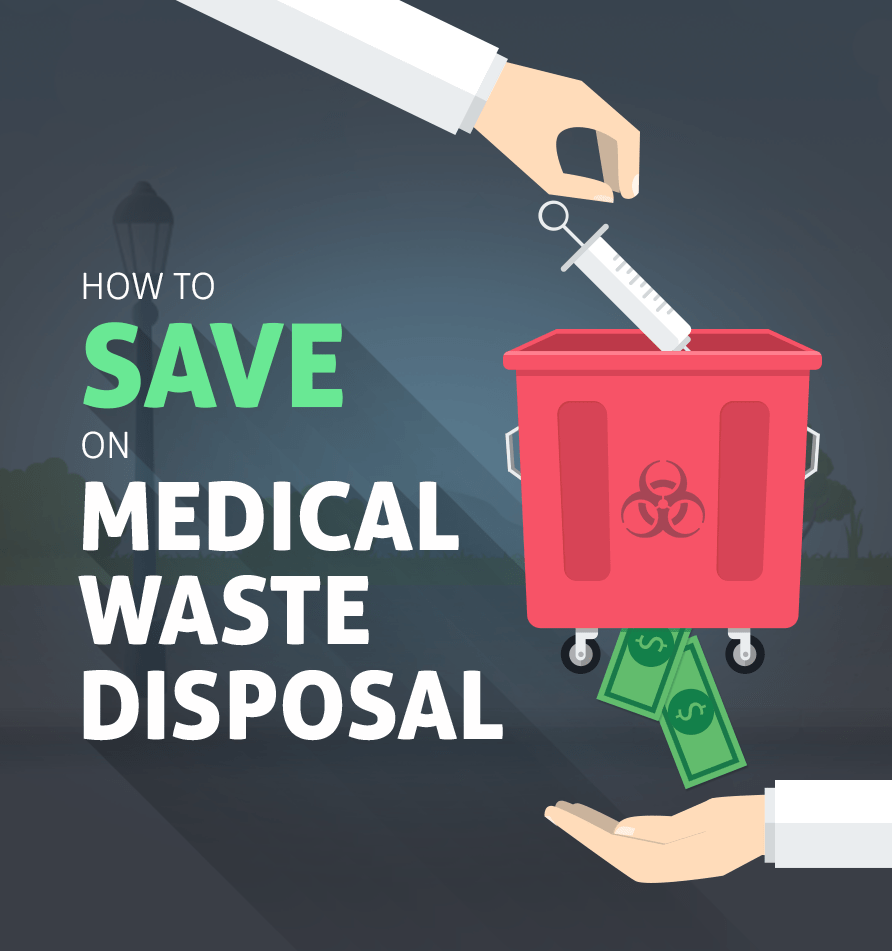Strategic Medical Waste Disposal Solutions: Supporting Safety and Sustainability
Lasting Solutions for Medical Waste Disposal
The proper monitoring and disposal of medical waste is essential in preserving a safe and lasting medical care system. This introduction will certainly explore different lasting services for clinical waste disposal, including waste segregation and sorting, on-site waste therapy systems, recycling and reuse programs, waste-to-energy conversion technologies, as well as partnership and education and learning efforts.
Waste Partition and Arranging
The process of waste partition and sorting is critical in making certain proper monitoring and disposal of clinical waste. Medical waste is identified right into different groups based on its potential danger to human wellness and the environment. Correct segregation and sorting of waste help to lessen the threat of contamination and guarantee that each sort of waste is taken care of and disposed of properly.
The initial action in waste segregation and sorting is to identify and separate various kinds of medical waste at the factor of generation. This entails recognizing the numerous classifications of waste, such as contagious waste, sharps waste, pharmaceutical waste, and chemical waste. medical waste disposal. Each classification needs details handling and disposal methods to avoid damage to medical care employees, individuals, and the setting

On-site Waste Treatment Systems
Proceeding from the previous subtopic on waste partition and sorting, an efficient service for sustainable clinical garbage disposal is the execution of on-site waste treatment systems - medical waste removal service. These systems permit health care facilities to treat their clinical waste on-site, lowering the requirement for transportation and disposal at off-site centers. On-site waste treatment systems generally include modern technologies such as autoclaves, microwave systems, or chemical sanitation devices
Autoclaves, generally utilized in healthcare setups, utilize high-pressure heavy steam to sanitize and deal with medical waste. This procedure efficiently eliminates microorganisms, infections, and various other potentially unsafe bacteria, rendering the waste risk-free for further handling and disposal. Microwave systems, on the various other hand, usage microwave radiation to heat and deal with the waste, achieving comparable results to autoclaves.
Chemical sanitation units entail the usage of chemicals to disinfect and treat clinical waste. These units can utilize numerous disinfectants, such as chlorine-based solutions, to counteract microorganisms and lower the risk of contamination. The treated waste can after that be safely dealt with in normal waste streams or undergo additional treatment, such as shredding or incineration.
Carrying out on-site waste therapy systems offers a number of advantages. It minimizes the ecological impact connected with transporting medical waste to off-site centers, lessening carbon emissions and the danger of crashes during transportation. Furthermore, it gives medical care centers with more control over the therapy process, making sure compliance with policies and minimizing the potential for unauthorized access to sensitive medical waste.
Recycling and Reuse Programs
To additionally improve lasting medical garbage disposal techniques, healthcare facilities can implement recycling and reuse programs, building upon the foundation of on-site waste treatment systems. Recycling and reuse programs provide an extra layer of environmental obligation by diverting medical waste from landfill and finding alternate uses for specific materials.
One secret facet of recycling and reuse programs is the segregation of waste at the source. medical waste removal service. By implementing proper waste segregation protocols, health care facilities can separate recyclable materials, such as plastics, metals, and glass, from non-recyclable waste. This enables for the effective recycling of these products, decreasing the demand for virgin sources and minimizing the ecological influence of clinical garbage disposal
Along with recycling, healthcare facilities can explore opportunities for reusing certain clinical items. For instance, single-use items like surgical drapes and dress can be sterilized and reused, reducing the demand for new materials and decreasing waste generation. Reusable sharps containers can also be used, minimizing the amount of plastic waste generated from disposable containers.
Carrying out recycling and reuse programs needs proper framework and training - WasteX Medical Waste Disposal. Healthcare centers should buy proper recycling containers, segregation systems, and sanitation devices, as well as make certain staff are educated on correct waste management techniques
Waste-to-Energy Conversion Technologies
One prospective strategy to attend to clinical garbage disposal sustainably is with the utilization of waste-to-energy conversion modern technologies. These technologies supply a promising remedy to the growing problem of clinical waste, which poses considerable ecological and public health dangers. Waste-to-energy conversion involves converting the natural elements of clinical waste into energy, such as warmth or electrical power, via various processes like pyrolysis, gasification, and incineration.
Incineration is one of the most typically utilized waste-to-energy modern technology for medical waste disposal - WasteX Medical Waste Disposal. It involves the controlled combustion of waste at heats, converting it right into ash, gases, and warm. This warmth can be made use of to create steam, which can after that be exchanged electrical energy
Pyrolysis and gasification are more recent modern technologies that supply even more ecologically pleasant options to incineration. Pyrolysis includes heating up the waste in the lack of oxygen, leading to the production of gases and char. Gasification, on the other hand, transforms waste right into a synthetic gas or "syngas" that can be utilized as a fuel for electrical power generation or other industrial procedures.
These waste-to-energy conversion modern technologies not only decrease the volume of medical waste but additionally give a resource of eco-friendly energy. In addition, they can help in reducing greenhouse gas exhausts and reliance on fossil fuels (WasteX Medical Waste Disposal). It is important to make certain that these innovations are executed with correct discharges control procedures to minimize any type of possible unfavorable impacts on air high quality and public health.
Cooperation and Education Campaigns
Collaboration among stakeholders in the healthcare industry is essential for applying sustainable remedies for medical garbage disposal. In order to effectively deal with the obstacles connected with clinical waste management, it is vital for medical care facilities, waste administration firms, regulators, and various other appropriate events to function together.

Furthermore, education and learning efforts play a crucial function in advertising sustainable practices. Healthcare professionals need to be aware of have a peek at this site the ecological influence of inappropriate waste monitoring and the value of carrying out sustainable services. Training programs and instructional products can assist them comprehend the proper partition of waste, using eco-friendly choices, and the advantages of waste-to-energy conversion innovations.
Collaboration and education and learning can additionally assist in the development of regulations and guidelines for clinical garbage disposal. By interacting, stakeholders can contribute to the creation of thorough plans that make certain risk-free handling, transportation, and therapy of medical waste.
Conclusion
To conclude, embracing sustainable remedies for medical waste disposal is crucial in order to decrease the unfavorable influence on the setting and public health and wellness. Waste partition and sorting, on-site waste treatment systems, reusing and reuse programs, waste-to-energy conversion technologies, and collaboration and education and learning initiatives are all vital methods to achieve this objective. Implementing these remedies requires cooperation between health care facilities, waste monitoring companies, and federal government agencies, in addition to continual education and understanding projects.
The process of waste partition and sorting is vital in guaranteeing correct management and disposal of medical waste.The initial action in waste segregation and sorting is to determine and divide various types of medical waste at the factor of generation. This entails recognizing the different groups of waste, such as infectious waste, sharps waste, pharmaceutical waste, and chemical waste.Continuing from the previous subtopic on waste segregation and sorting, an effective solution for lasting clinical waste disposal is the implementation of on-site waste treatment systems. The treated waste can then be securely disposed of in normal waste streams or undergo more therapy, such as shredding or incineration.